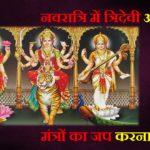
Table of Contents
All Twelve Sankranti in a Year
In Hindu calendar, there are total 12 Sankranti in a year. All Twelve Sankranti can be divided into four categories.
1. Ayan Sankranti
2. Vishuva Sankranti
3. Vishnupadi Sankranti
4. Shadshiti-mukhi Sankranti
Among all Sankranti, Makar Sankranti is the most significant one and it is observed throughout India. Sankranti days are considered good for charity activities and all auspicious ceremonies are avoided on the day of Sankranti(s)
Sankranti Yearly
January (Pongal, Makar Sankranti)
February (Kumbha Sankranti)
March (Meena Sankranti)
April (Solar New Year, Mesha Sankranti)
May (Vrishabha Sankranti)
June (Mithuna Sankranti)
July (Karka Sankranti)
August (Simha Sankranti)
September ( Kanya Sankranti, Vishwakarma Puja)
October (Tula Sankranti)
November (Vrischika Sankranti)
December (Dhanu Sankranti)
1.Ayan (अयन) Sankranti / Ayani Sankranti
Makar Sankranti and Karka Sankranti are two Ayan (अयन) Sankranti which are also known as Uttarayana Sankranti and Dakshinayana Sankranti respectively. These are conceptually equivalent to Winter Solstice and Summer Solstice in Hindu calendar and these Ayani Sankranti(s) are drifting apart from seasonal Solstices due to precession of the Earth. After thousands of years these Ayani Sankranti(s) will coincide again with seasonal Solstices.
Astrology which considers precession of the Earth is known as Sidereal Astrology and Hindu calendar is based on Sidereal Astrology. Sidereal astrology is also known as Nirayana (निर्णय) Astrology. The counterpart of Sidereal astrology is known as Tropical or Sayana (सयाना) Astrology which is followed by most Western Astrologers. Precession is also known as Ayanamsha (अयन-अंश).
Know More Sunday Saptami
Uttarayana (उत्तरायण) is six month time period when the Sun moves into Northern hemisphere and Dakshinayana (दक्षिणायण) is remaining six month time period when the Sun moves into Southern hemisphere. Due to precession of the Earth these definitions of Ayan Sankranti(s) have become incorrect.
The Sun God, also known as Surya Dev, starts moving into Northern hemisphere about 24 days before Makara Sankranti. Currently Makara Sankranti occurs on 14th or 15th January while Winter Solstice, the movement of the Sun from Southern to Northern hemisphere, starts on 21st or 22nd December.
Vedic Astrologer and Panchang Karta (कर्ता) are aware of this fact and don’t do any correction as precession has to be considered to mark the correct position of Stars.
Correct positioning of Stars is foundation of Hindu calendar and any likely correction will invalidate whole concept of Sidereal Astrology. During Makara Sankranti the Sun God coincides with same Stars in the background which was the original (and is still) concept to mark the day of Makara Sankranti. During Winter Solstice, the Sun doesn’t coincide with same Stars in the background which is must to mark the day of Makara Sankranti. Hence Hindu calendar doesn’t respect seasons and let them drift but maintain the same position of the Sun (with respect to Stars in the background) to mark the day of all Sankranti(s) including Makara Sankranti.
According to above explanation, Hindus still celebrate Makara Sankranti on right day however the word Uttarayana has become misnomer with time and most Indians have accepted this fact by ignoring Winter Solstice and Summer Solstice for any religious activities.
Similarly Dakshinayana when the Sun God starts moving into Southern hemisphere falls on 21stor 22nd June about 24 days before Karka Sankranti. Karka Sankranti currently occurs on 15thor 16th July which has drifted apart from Summer Solstice by 24 days.
For Ayan Sankranti auspicious time period is well written in religious texts. For Makara Sankranti 40 Ghati(s) after Sankranti and for Karka Sankranti 30 Ghati(s) before Sankranti is auspicious for doing all rituals related to Sankranti.
Uttarayana in Hindu Puranas. Uttarayana is referred to as the day of new good healthy wealthy beginning.
According to Kauravas and Pandavas, in Mahabharata on this day Bheeshma Pitamaha, chose to leave for his heavenly abode. As per the boon granted to Devavrata (young Bheeshma), he could choose his time of death and he chose this day, when the sun starts on its course towards the northern hemisphere.
According to Hindu tradition the six months of Uttarayana are a single day of the Gods; the six months of Dakshinayana are a single night of the Gods. Thus a year of twelve months is single Nychthemeron of the Gods.
2.Vishuva (विषुव) / Sampat (सम्पात) Sankranti
Mesha Sankranti and Tula Sankranti are two Vishuva Sankranti which are also known as Vasant Sampat and Sharad Sampat respectively. These are conceptually equivalent toVernal Equinox and Autumnal Equinox in Hindu calendar and these Vishuva Sankranti(s) are drifting apart from seasonal Equinoxes due to precession of the Earth. After thousands of years these Vishuva Sankranti(s) will coincide again with seasonal Equinoxes. For these two Sankranti(s) fifteen Ghati(s) before and after Sankranti moments are considered for auspicious activities.
3.Vishnupadi (विष्णुपदी) Sankranti
Simha Sankranti, Kumbha Sankranti, Vrishabha Sankranti and Vrischika Sankranti are four Vishnupadi Sankranti. For all these four Sankranti(s) sixteen Ghati(s) before Sankranti moments are considered for auspicious activities.
4.Shadshiti-mukhi (षड्शिती मुखी) Sankranti
Meena Sankranti, Kanya Sankranti, Mithuna Sankranti and Dhanu Sankranti are four Shadshit-mukhi Sankranti. For all these four Sankranti(s) sixteen Ghati(s) after Sankranti moments are considered for auspicious activities.
…. ![]()
![]() ….
….










